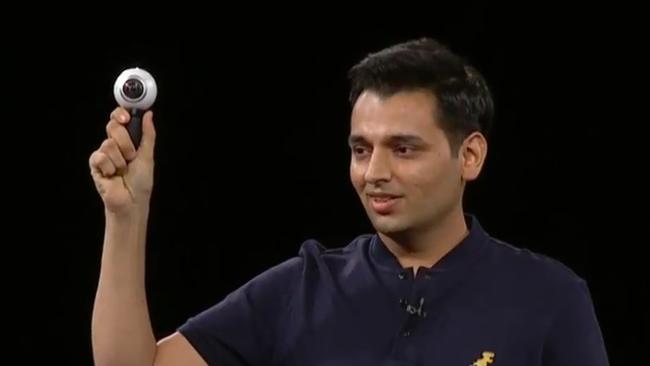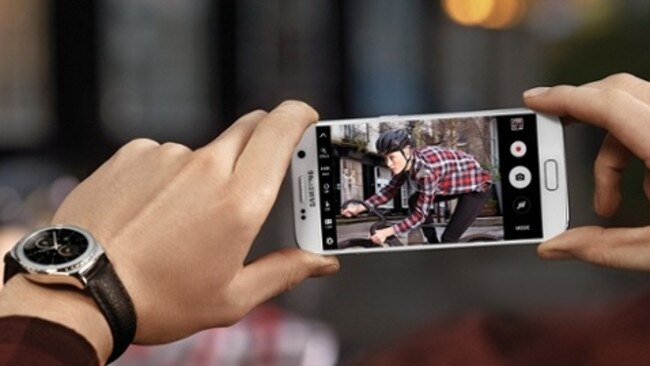Samsung unveils Galaxy S7 and S7 Edge
The microSD card is back, the camera is better, it’s waterproof and there’s wireless charging | The verdict

The microSD card is back, the camera is better, it’s waterproof and there’s wireless charging.
Samsung has unveiled 5.1-inch Galaxy S7 and 5.5-inch S7 Edge smartphones.that address some of the grumbles of S6 users and offer innovations including some features found on competitor phones.
At its Unpacked event in Barcelona, Samsung also announced the long anticipated outcome from its Project Beyond — a 360 degree camera called Gear 360 that will let users capture 360 video and then play it back through a Samsung VR (virtual reality) headset.
Audience members at Samsung’s launch event in Barcelona were asked to put on Gear VR headsets in what was mass virtual reality marketing.
But the main game is the next generation of Android’s most successful premium phone range. Samsung has produced S7 handsets in the wake of disappointing Galaxy S6 sales which hampered the Korean manufacturer just as it took on energised China manufacturers in Asian markets. The S6’s fortunes were further hampered by the public liking the Galaxy S6 Edge model with its curved screen more. Its manufacturing runs hadn’t catered to that outcome.
The result is Galaxy S7 and Galaxy S7 Edge models that cautiously address issues from last year’s handsets and add a few improvements, rather than a radical rethink.
The new handsets were unveiled at the Samsung Unpacked event, held in Barcelona in the lead-up to his week’s Mobile World Congress, a premium event for telcos and for smartphone launches.
Samsung has announced Australian availability from March 11. The Galaxy S7 will sell for $1,149 and S7 Edge for $1,249. Australian customers can preorder the phones from this Friday, February 26. Users who preorder an S7 get a Gear VR headset for free.
Samsung, whose premium handsets have excellent cameras, has worked on improving image quality even more. It’s incorporated dual pixel technology. Together with a wider aperture and bigger pixel, Samsung says the S7 camera can use a faster shutter speed and more accurate focus for sharper images in lowlight conditions.

There’s a motion panorama mode that adds movement to traditional panoramic photos. However, as predicted, the overall number of pixels is less than last year — 12 megapixels on the back facing cameras as opposed to 16 megapixels last year.
During the presentation, the Korean manufacturer took aim several times at the iPhone 6s Plus camera, displaying examples of where it said its technology was superior to Apple’s.
Design wise, it has stuck with the up-market glass and metal look of the S6 rather than revert to the cheaper plastic look of previous models.
The S7 range includes always on, a feature found on rival LG phones that displays basic user information and notifications.
After introducing waterproofing with the S5, and then ditching it with the S6, waterproofing is back with the S7. Both models have an IP68 rating for water and dust resistance, which makes them useful devices at the beach or around the pool.
An edge panel lets you swipe from the right hand side to display commonly-used apps.
Samsung says both models can deliver fast wired and wireless charging. Battery capacity is significantly bigger, increased from 2550 and 2660 mAh on the S6 and S6 Edge to 3000 and 3600mAh on this year’s models.
Samsung users will be relieved that the microSD card port ditched with the S6 is back in the form of a hybrid SIM card tray. It can support SDXC card capacities of up to 200 Gigabytes. Android Marshmallow can blend micro SD card storage with in-built storage. Samsung however will sell phones with an option of 32GB and 64GB of internal storage. In some markets, the hybrid tray can alternatively house another SIM card.
But there’s no return of a removable battery found in earlier Galaxy models.
The phone’s cooling system has been revamped in the wake of concern about the S6 overheating. There’s a new add-on called Game Launcher that lets gamers manage energy consumption and minimises notifications. The adoption of the Vulkan API (application programming interface) lets users play high-performance graphic games with lower battery consumption.
Samsung Pay, NFC and fingerprint scanning are among features.
Samsung S7 and S7 Edge features
Gear 360 camera
The Gear 360 camera is a long awaited outcome of Project Beyond which Samsung showcased two years ago at Barcelona. It lets users create their own basic virtual reality content to enjoy through a Gear VR headset.
The Gear 360 has dual fisheye lenses, each with 15 megapixel image sensors, that lets users capture near 4K video quality of 3840x1920 pixels in 360-degrees, along with 30 megapixel still images. Users also can shoot 180-degree wide angle video and images using one side of the camera lens.

Speaking at the launch event, Facebook founder Mark Zuckerberg said more than 1 million people downloaded 360 degree videos daily, despite it being early days for the platform.
Facebook owns Oculus VR, the maker of the Oculus Rift virtual reality headset. Samsung worked to make a mobile version of Oculus Rift available as Gear VR.
Mr Zuckerberg described Samsung’s as “the best mobile VR experience yet” and said VR was going to be the “most social” platform.
Samsung says the camera are sold with a tripod and can use accessories and mounts currently on the market.
Users can use their smartphone to preview content being recorded by the camera, upload content to 360-degree vision-friendly sites such as Facebook, YouTube and Google Street View, and view their self-created content through a Gear VR headset. Samsung says it will produce software to make this possible.
The new camera is compatible with Galaxy S7 and Galaxy S7 edge, Galaxy S6+, Note 5, Galaxy S6 edge and Galaxy S6 phones. The camera will be available in Q2 2016 in select countries. Australian availability and pricing is unknown at this stage.
More Coverage




